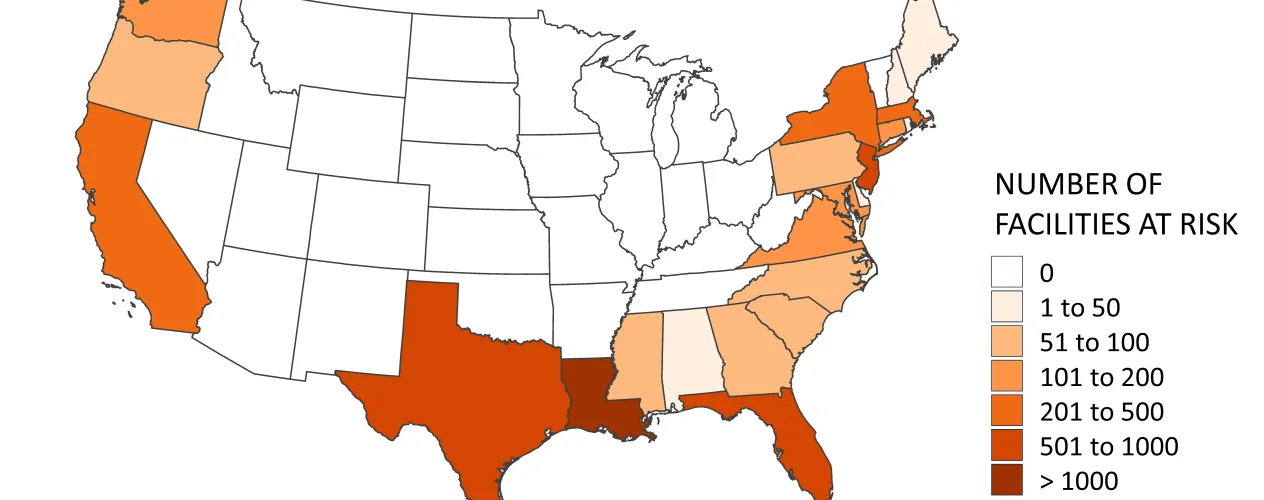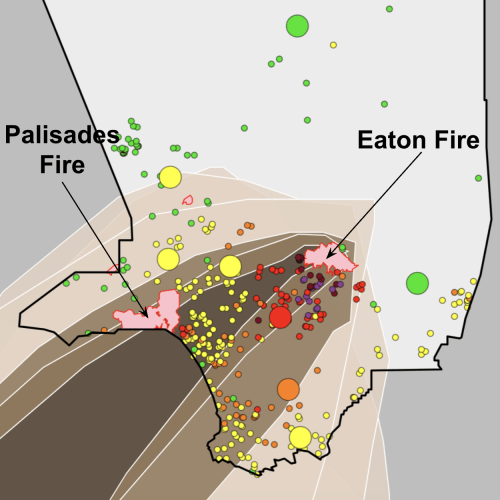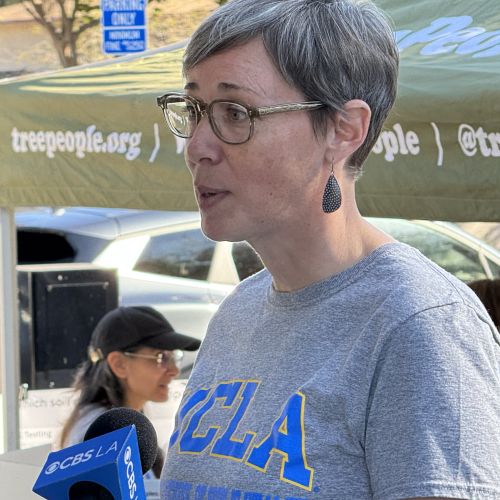UCLA Fielding-led research shows 5,500 toxic sites in United States at risk of flooding because of sea level rise
Peer-reviewed study, co-led by UCLA Fielding's Dr. Lara Cushing, shows facilities across the U.S. face rising flood risks due to sea level rise.

More than 5,500 hazardous sites across the U.S. are projected to be at risk of coastal flooding by 2100, according to new research published today and led by University of California scientists.
The peer-reviewed study - Sea level rise and flooding of hazardous sites in marginalized communities across the United States – was published today by the London-based scientific journal Nature Communications. The researchers found that if heat-trapping pollution grows unchecked, rising sea levels will flood a wide range of sites, including facilities handling sewage, toxic waste, oil and gas, and other industrial pollutants, posing serious threats to public health and neighboring communities.
“Flooding from sea level rise is dangerous on its own - but when facilities with hazardous materials are in the path of those floodwaters, the danger multiplies,” said Dr. Lara Cushing, with UCLA’s Fielding School of Public Health. “This analysis makes it clear that these projected dangers are falling disproportionately on poorer communities and communities that have faced discrimination and therefore often lack the resources to prepare for, retreat, or recover from exposure to toxic floodwaters.”
The researchers examined the 23 U.S. states with ocean coastlines and Puerto Rico, and found the threat is not evenly distributed; seven states - Florida, New Jersey, California, Louisiana, New York, Massachusetts, and Texas - account for almost 80% of the hazardous sites at-risk by 2100. Much of the risk is already locked in due to past emissions, and nearly 3,800 hazardous facilities are projected to face flood risk as soon as 2050, researchers said.
The study not only identifies toxic sites at risk from coastal floods but also analyzes who lives nearby. The findings reveal that certain communities are more likely to live near at-risk sites. Neighborhoods with one or more of these at-risk facilities, under a high emissions scenario, have higher proportions of renters, households living in poverty, residents who identify as Hispanic, linguistically isolated households, households without vehicles, seniors, and non-voters than neighborhoods without at-risk facilities.
The analysis is based on projections of a flood with a 1% annual chance of occurring, commonly known as a 100-year flood event, under two emissions scenarios: a high emissions scenario (RCP 8.5) and a lower emissions scenario (RCP 4.5). The methodology was co-developed with an advisory committee, including both public health experts and community leaders in the coastal communities.
“Coastal communities, including underserved groups, that are working to fortify their resilience to climate change need access to critical data and resources to plan for the future,” said Dr. Rachel Morello-Frosch, with UC Berkeley’s School of Public Health and a co-author.
The authors note that moderate cuts to climate pollution could reduce the number of sites at risk by more than 300 by the end of the century.
“There are potential solutions, if policy makers are ready to move forward,” Morello-Frosch said. “And there is a clear need for disaster planning and land-use decision-making, as well as mitigation strategies to address the inequitable hazards and potential health threats posed by sea level rise.”
Methodology
The analysis included four steps: 1) the identification of coastal hazardous site locations and the cleaning of associated descriptive data; 2) the estimation of future flood risk due to sea level rise at each site location; 3) the compilation of measures of demographics and social marginalization; and 4) a neighborhood-level analysis of the relationship between these measures and residential proximity to at-risk sites.
Funding
This project has been funded wholly or in part by the United States Environmental Protection Agency (EPA), under assistance agreement 84003901. The contents of this document do not necessarily reflect the views and policies of the EPA, nor does the EPA endorse trade names or recommend the use of commercial products mentioned in this document.

